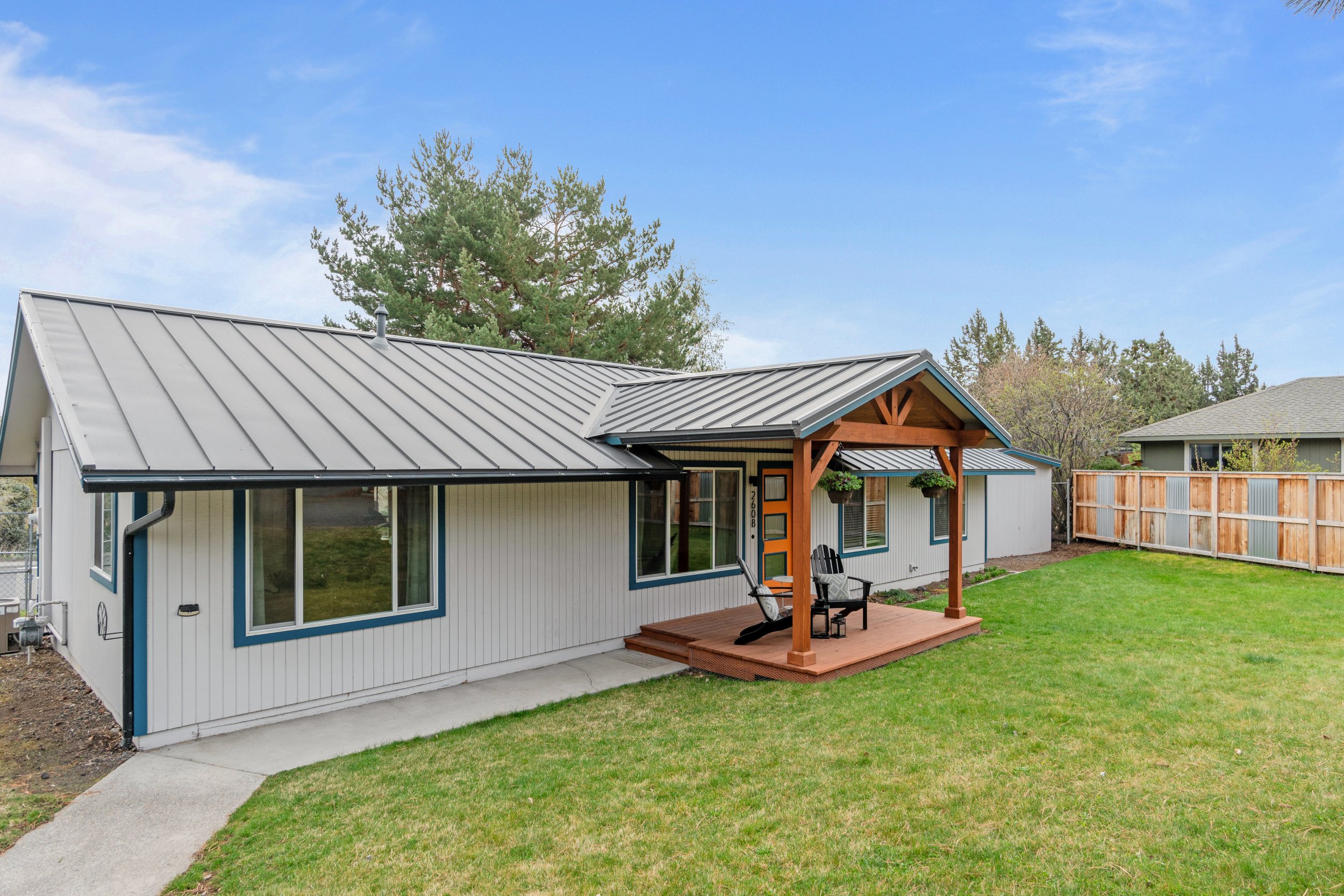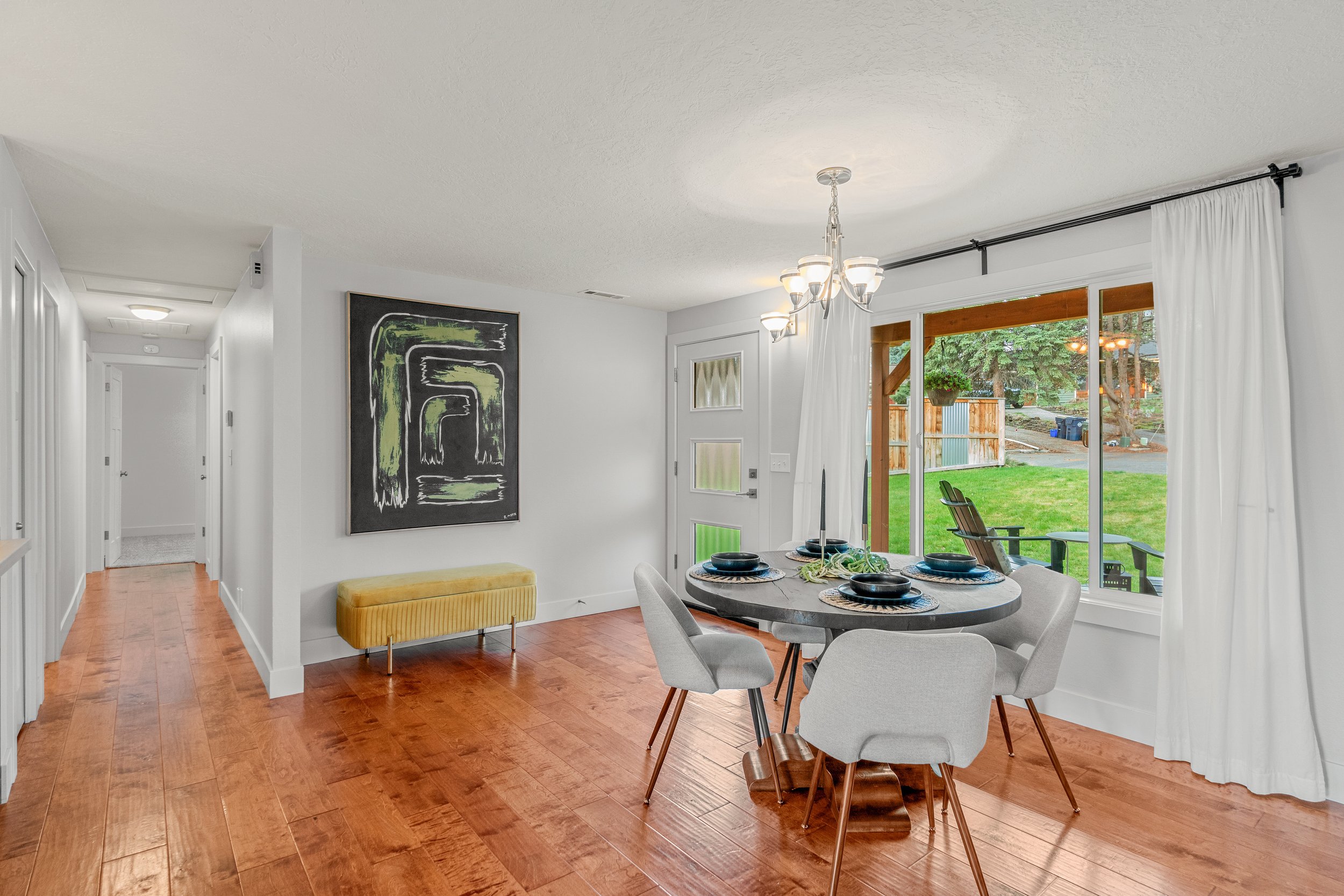For most people, moving happens because it must, whether it’s to a larger home for a growing family, a cross-country relocation for work or to downsize in retirement.
Even when you’re excited about your new destination, moving day will always be a little stressful – there are a lot of details to coordinate and boxes to pack, no matter how prepared you may be.
Fortunately, there are things you can do to make moving and packing a little easier.
Here are 20 quick moving tips and tricks for making your move to a new home a success.
Purge belongings before you pack.
Pack by room.
Label boxes.
Keep original boxes for fragile items.
Use packing paper to cut down on crushed boxes.
Avoid overfilling boxes.
Know the box you'll unpack first.
For short-distance moves, transport small items in your car.
Memorize your new address.
Give movers plenty of notice.
Inquire with more than one moving company.
Work out your moving budget.
Consider moving in the off-season.
Set up utilities before your moving date.
Let the Postal Service know about your move.
Consider a larger company for long-distance moves.
Walk through moving day in advance.
Protect furniture with padded blankets.
Keep irreplaceable items with you.
Save a day for cleaning after move-out.
Purge Belongings Before You Pack
Before you start packing, take the time to go through items in your closet, on your shelves or stored away in the basement or garage to decide what doesn’t need to come with you to your new home.
By purging old clothes, decor and toys, you’ll cut down on the number of things you have to pack, the total cost of the move and the amount of clutter that makes it to your new home. Hold a garage sale, post items for sale or free online, or donate them to Goodwill or the Salvation Army, as long as the items still have some wear left in them. Well-worn shoes and broken toys, on the other hand, should go in the trash.
Pack by Room
When you start packing your belongings for a move, keep the unpacking process in mind. Avoid disorganized piles of items throughout your new home by consciously packing one room at a time.
This way, clothes in your closet can all be unpacked at once, as can your kitchen utensils and tools meant for the garage or shed. You may be tempted to take advantage of packing hacks, like using T-shirts instead of packing paper to pad dishes, but packing paper is often more compact and will make for a smoother unpacking process.
Label Boxes
Keep a marker on hand as you pack and seal boxes to note what’s inside and where the box should go once it arrives at your destination. Labeled boxes make it easier for movers to put them in the right place, and it will help you start the unpacking process
If you have more than one floor in your new home, consider adding a “first floor” or “second floor” label as well to get everything in the right spot. Then communicate the specifics with movers as well.
“On moving day – whether it’s pack day or pack-and-load day or unpack day – make sure you’re reachable,” says Ryan Bowley, executive director of the American Trucking AssociationsMoving & Storage Conference.
Keep Original Boxes for Fragile Items
Increase the chances that your state-of-the-art TV makes it to your destination unharmed by keeping the box it came in. The manufacturer’s packing materials are specifically designed to safely transport the exact dimensions of a TV, computer screen or similar items. A large box and molded foam may not be a convenient item to easily tuck away in a closet or the basement, but if you move with some frequency, keeping it in your possession will pay off.
If you already threw out your original TV box, you can get boxes designed for TVs, other electronics and artwork at home improvement stores like Home Depot and Lowe’s, or through moving rental companies like U-Haul and Penske. Use foam corners and foam sheets to pad any fragile items in the box.
Use Packing Paper To Cut down on Crushed Boxes
If you’re only filling boxes halfway to keep them from being too heavy, the extra space makes it possible for items to jostle around or for the box to be crushed under the weight of other boxes.
By using crumpled packing paper or newspaper to fill the dead space in a box, the box is less likely to endure damage both inside and out. The reasoning is similar to why packing peanuts or similar space-fillers are used to ship items – they provide a loose packing material to reduce the chances of damage in transit.
Avoid Overfilling Boxes
Whether you’re loading your trunk or professional movers are loading a truck, save everyone from pain and potential injury by keeping your boxes from getting too heavy.
As you pack each box, lift it occasionally to ensure it’s still relatively easy to lift – even if that means there’s a bit of room left in the box. You can fill the rest of the box with packing paper or lightweight items. You may end up with more boxes to move, but they’ll be less of a hassle to carry.
Know the Box You’ll Unpack First
The last thing to go in your moving truck or storage container is what you plan to unpack first. This box may include cleaning supplies, a change of clothes, laundry detergent or even some portable speakers to make unpacking more enjoyable. For kids, the first-day box may include a few toys they may miss but can’t take in the car or on a plane. This box should be clearly labeled for the purpose of unpacking it first, and position it so it’s the first thing you grab off the truck.
For Short-Distance Moves, Transport Small Items in Your Car
If you’re moving to a new home in the same city or just one city over, you can cut down on the time and cost required for professional movers by transporting many of your smaller items in your own car. Especially if you have a few days to make your move, consider making a few trips of carloads with items like books, kitchen goods, clothes, table lamps and decor so when the moving truck arrives, the pros will only need to take care of the big furniture.
Memorize Your New Address
You’ll need to provide your new address to movers, utility companies, the U.S. Postal Service, your employer and any family or friends who will want to send you cards and packages.
Memorize your new address, including the apartment number and ZIP code, to make every step as smooth as possible. Otherwise, you’ll find yourself having to call back with the information or delaying online registrations.
Give Movers Plenty of Notice
A last-minute call to professional movers can mean a high price tag or unavailability because the mover is already booked.
“It is a good rule of thumb to contact your mover at least four to eight weeks in advance of your ideal move date. However, if you're moving to another country or across the country, you should always give yourself and the movers more time,” Mary Beth Johnson, vice president of corporate marketing at Atlas Van Lines and Avail Move Management, wrote in an email. “For international moves specifically, we ask that you contact us at least 90 days in advance of your target move date.”
Inquire With More Than One Moving Company
As you would when hiring a contractor to renovate your home, reach out to at least three moving companies for an estimate and to inquire about availability, insurance coverage and other key details affecting your move. While a lower price is ideal, make sure you’re hiring a company you trust and are confident will move your belongings carefully.
The American Trucking Associations Moving & Storage Conference has a list of certified movers on its website to help consumers find reliable companies. Bowley also advises looking up a company with the Federal Motor Carrier Safety Administration. “That’s a place you can look up the complaint records and registration records of moving companies,” Bowley says.
Work Out Your Moving Budget
Look at the money you have available for your move, factoring in any relocation stipend your employer may offer if you’re moving for work. Your budget could be extensive or next to nothing, but it will help you determine your next step.
With a few thousand dollars and up, you may find professional movers who load, transport and unload your belongings to be the easiest option. At a lower cost, a hybrid option may be better, with hired helpers and a U-Haul truck or storage containers. Calculate the total cost of the move with quotes from moving companies or pricing for trucks and containers available online, which tend to be based on location.
Consider Moving in the Off-Season
With better weather and the kids out of school, summer is the most popular time for people to move from one house to another. While this may be your ideal time to move as well, the higher demand means movers will be busier and you can expect higher fees. “Because of that, winter is the best time to move if you are looking for cost savings or more availability on specific date options,” Johnson says.
Especially if you don’t have kids, an off-season move can also mean less competition among homebuyers and renters, depending on where you live. But if summer is the only option for you, “the industry is really focused around meeting the demands of customers, so we recognize the May-to-September timeline is the peak season” and prepare for such demand, Bowley says.
Set up Utilities Before Your Moving Day
Contact all utility companies a couple of weeks prior to your moving day to set up utility accounts, schedule a turn-on date and plan for any necessary in-person visits. Check with your real estate agent or landlord to see which services require account setups, such as gas, electric, water, trash and recycling pickup, sewer access and more.
For internet, cable or home phone service, try to schedule an appointment for after moving day.
Let the Postal Service Know About Your Move
In addition to utilities, file a change-of-address form with the U.S. Postal Service to forward any mail you receive that’s addressed to your old home. The change of address also makes it easy to spot when you’ve forgotten to update your address with your bank or another important account because the forwarded mail has a yellow USPS sticker showing the address discrepancy.
The Postal Service reports that 33.2 million permanent and temporary address changes were made in 2022. Changing your address with the Postal Service can be done in person at the post office or online, and you should fill out the form even if you’re planning to stay somewhere for just a couple of months, so important mail doesn’t sit unopened.
Consider a Larger Company for Long-Distance Moves
If you’re using professionals for your move to another state or to another country, there’s a good chance you won’t be able to use a mom-and-pop moving company that operates exclusively in your current city. National moving companies have large-scale operations that make it easier to coordinate an interstate move, Johnson says. Some local companies may even be agents or affiliates of larger van lines such as Atlas Van Lines, North American Van Lines and Mayflower.
Walk Through Moving Day in Advance
As soon as you’ve booked any professional help or rented any vehicles, walk through moving day to ensure there aren’t any last-minute hiccups. If you won’t have your storage container until 11 a.m., for example, don’t ask friends or movers to show up to load it before then. You’ll also want to double-check if any additional steps are needed, like reserving the loading dock in your apartment building or filing for a no-parking zone with the city for the truck to fit. “Some cities require a permit to have a container placed directly on the ground,” Sam Shoen, U-Box program director at U-Haul, wrote in an email. “However, a U-Box container delivered via one of our specially built U-Box trailers can be legally parked in any parking space.”
Protect Furniture With Padded Blankets
Your dining table may seem like a stable piece of furniture that is safe from major damage, but just about anything can happen in a moving truck – especially if it’s a long-distance move. Without proper precautions, the stain or paint on a table or cabinet can be rubbed off, and deep scratches can damage the surface of any type of furniture.
In many cases, professional movers will bring thick moving blankets to drape over couches or wrap around shelves to protect them, but it’s good to ask before moving day. Otherwise, these blankets can be purchased at Home Depot, Lowe’s, Ace Hardware or any store that sells packing equipment.
Keep Irreplaceable Items With You
Family heirlooms, key identifying documents and medications are just a few of the items you shouldn’t put into a truck or storage container when you move. With anything you load onto a truck or container for a professional to move for you, there is potential for damage, and moving insurance unfortunately can’t cover items that are irreplaceable. From a safety standpoint, Shoen explains that you should not put firearms, fireworks, propane tanks or torches in a container or truck, either.
Save a Day for Cleaning After Move-Out
Whether you’re turning the property over to your landlord or leaving a house for new owners to move in, your space is expected to be relatively clean once you’re gone. Even with regular cleaning, you’re likely to find plenty of dust bunnies and missed spots when you move furniture out of a room.
By reserving a buffer day for cleaning, you can come back to the now-empty space to vacuum, sweep floors, wipe down countertops and clean the shower one last time. This extra day is crucial if you’re looking to recoup your security deposit from your landlord. If you sold the property, hiring a cleaning crew may be the best route to ensure the property is ready to change hands.
Related Links
If there is a home that you would like more information about, if you are considering selling a property, or if you have questions about the housing market in your neighborhood, please reach out. We’re here to help.















